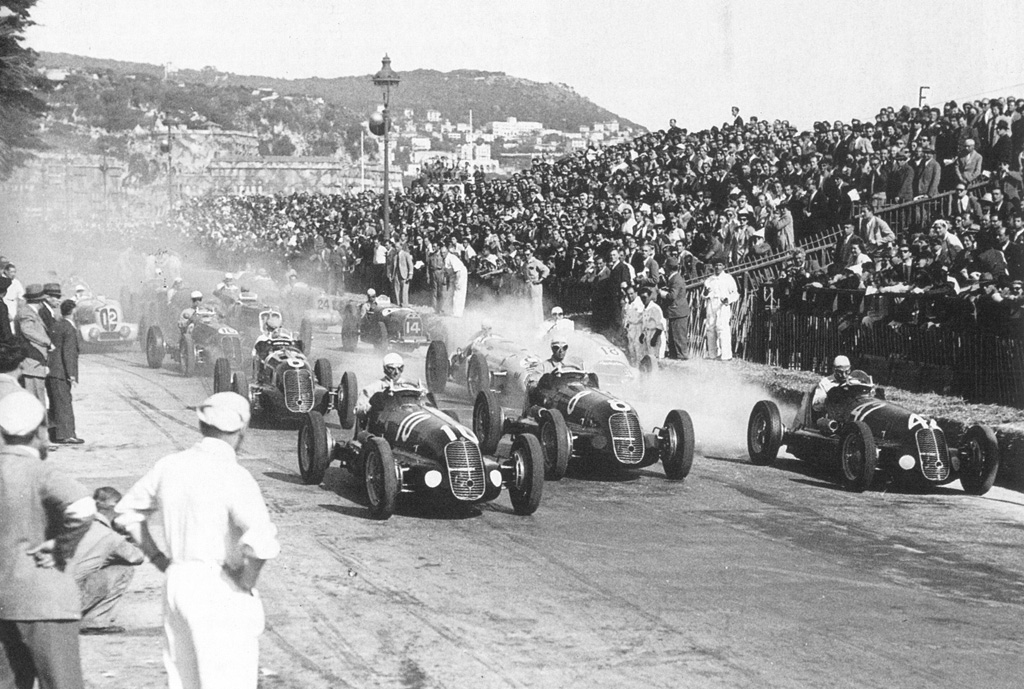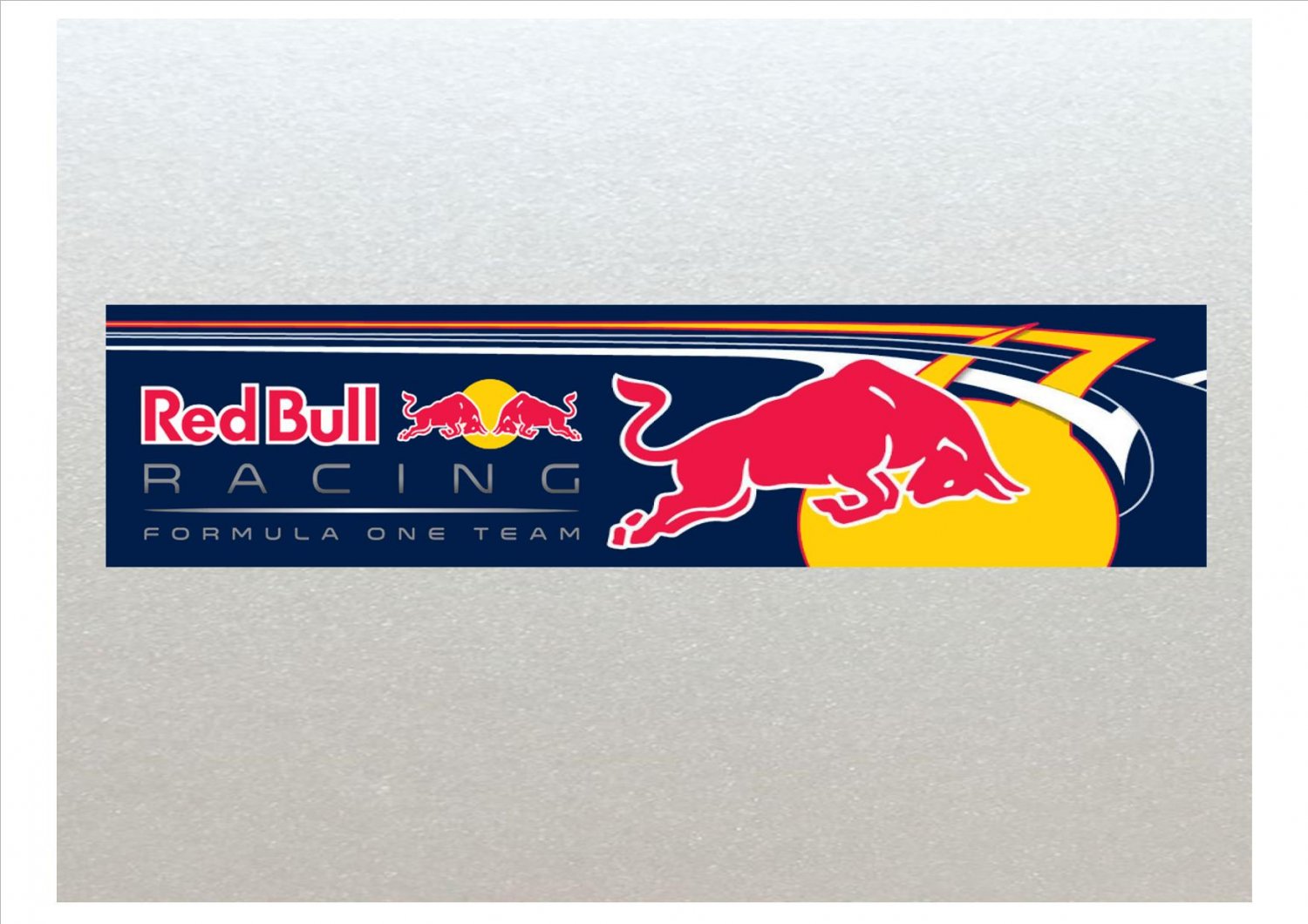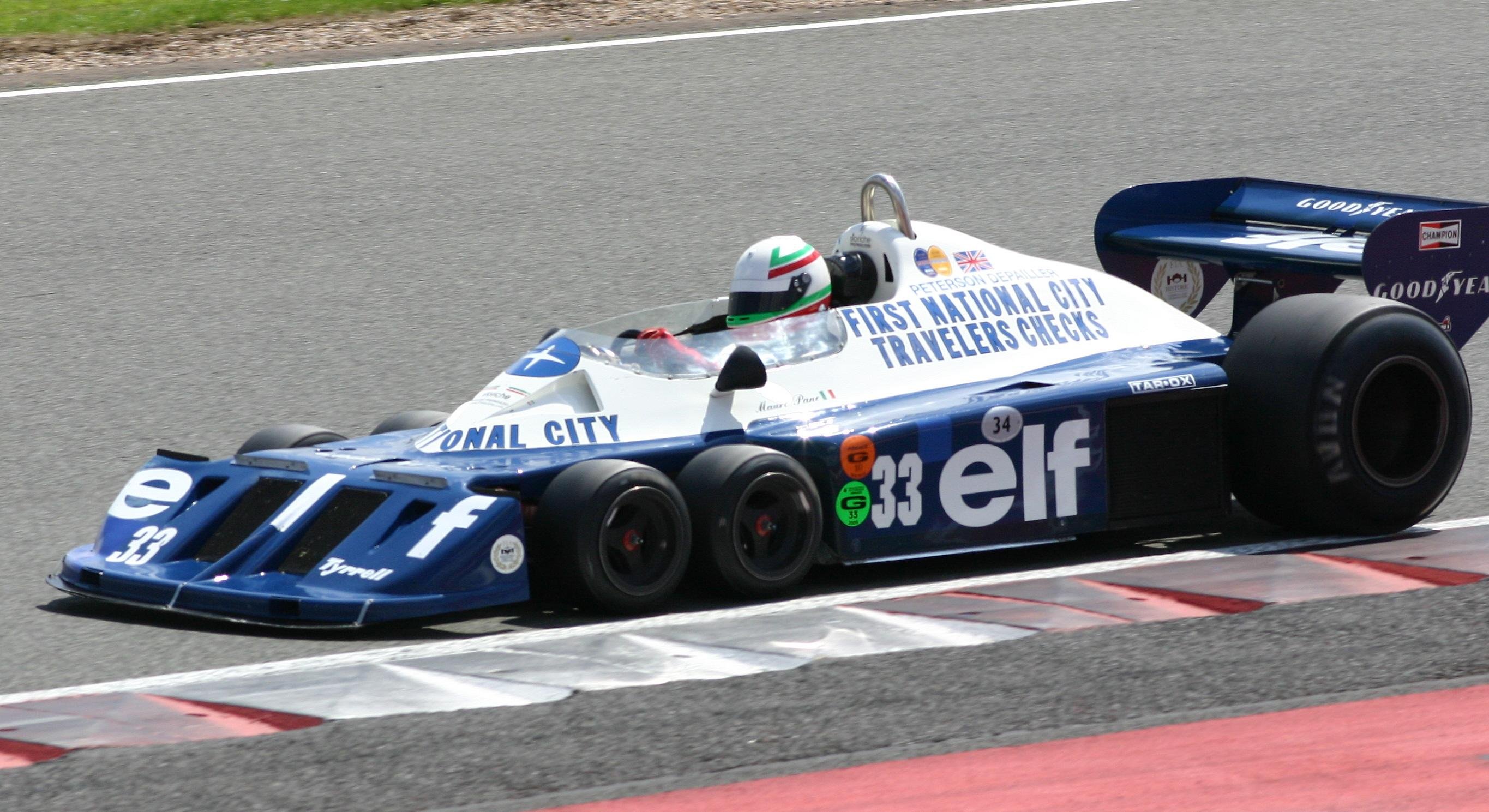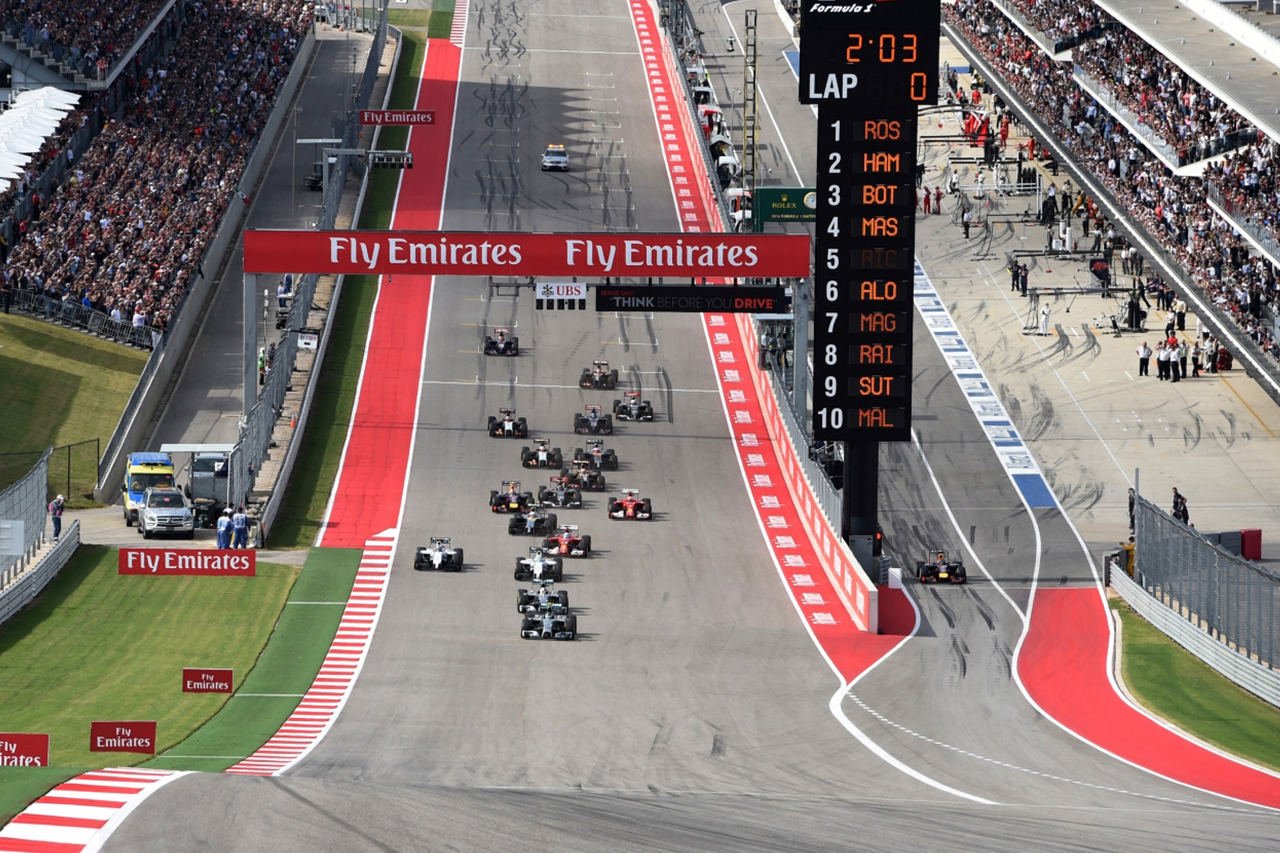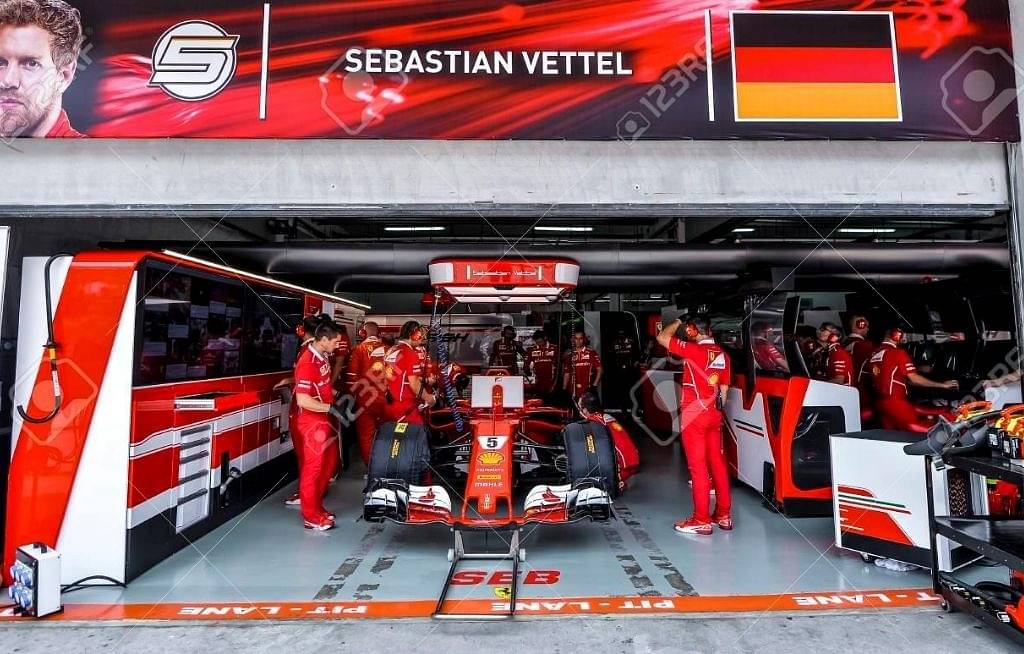From the first days of motor racing, drivers have lived close to the edge. Thanks to marked improvements in safety standards, the number seriously injured and killed competing in the sport has significantly reduced. The last death of a driver in an F1 car was Ayrton Senna in 1994, but in the early years the toll was alarming. Here is a list of all those who have died racing in Formula One, not including officials and spectators.
Between 1950 and 1961 the Indianapolis 500 was considered part of the Formula One championship, even though few European drivers made the trip over to America to compete. After winning 16 races and finishing runner up in the standings four times, Moss retired from Formula 1 in 1962 after a serious accident that left him partially paralysed for six months. Unlike many heroic Formula 1 drivers from history, Moss 'dabbled in the boundary of disaster' but lived to tell the tale. This will go down in history as the most talked about F1 fatality in its history. The legendary Brazilian died when his car crashed into a concrete wall, causing head injuries. His death was the second that weekend, after Roland Ratzenberg had a fatal crash in qualify.
These two deaths prompted calls for major safety overhaul, which led to no death recorded for two decades, before Bianchi's crash. Until his last days I know he remained a racer and a fighter at heart. His legacy will live on forever." Williams devoted his life to F1, becoming the longest-serving team principal in the sport's history. He also endured the deaths of close friend and driver Piers Courage in 1970 and in 1994 that of Ayton Senna while driving a Williams at Imola. Williams' team won seven drivers' titles and nine constructors' championships. They took their first grand prix win in 1979 and under Williams' leadership as founder and team principal they were a dominant force in the 80s and 90s.
From inauspicious beginnings in a warehouse in Didcot, William's fierce determination to compete and be victorious paid off as he forged one of the most successful teams in F1 history. While he had some thrilling highs, he also experienced bitterly cruel lows as a grand prix team owner. The team he founded in 1977 – Williams Grand Prix Engineering – won an impressive nine constructors' world championships and seven drivers' titles during the 80s and 90s. Notably, it is one of only three teams in Formula One to win 100 races. Although the drivers are highly skilled and have lots of practice, it is still amazing that there are not more fatal accidents in each of the three motorsports of F1, IndyCar and NASCAR. It can seem like there is a crash in each of these events in every single race, and so it is really an achievement for the industry that there are rarely any fatalities.
When you win over 300 races in your life, including five NASCAR championships, you earn a place in the NASCAR Hall of Fame. That's what happened to Jack Ingram, who earned the nickname "Iron Man" for the tremendous number of races he competed in during the 1970s, when NASCAR championships could still be affected by the regular weekly race standings. He was also named the Most Popular Driver in the Budweiser Late Model Sportsman Series in 1982.
The only man to win the drivers' championship posthumously, Rindt died during final practice at Monza when his car crashed into perimeter fencing and disintegrated. He had only just started wearing a seat belt and it is believed that as he slid down inside the cockpit it cut his throat. The crash was in exactly the same place that von Trips had died nine years earlier. In the early days of the championship, death was a regular occurrence. A mass collision on the first bend of the race at Monza left Peterson with severe leg injuries, although when he was pulled from his blazing car by three other drivers it seemed his injuries were serious but not life-threatening.
But as Peterson lay on the tarmac, track officials hampered attempts to get an ambulance to him and it was a quarter of an hour before medical aid arrived. There was more concern for Vittorio Brambilla, who had head injuries, and he was the first to be treated, and fortunately he made a full recovery. At the hospital surgeons, with Peterson's agreement, operated that night to stabilise ten fractures in his legs. However, during the night bone marrow went into his bloodstream through the fractures leading to him suffering full renal failure. Donohue lost control of his March during a practice session and careered into fencing.
A marshal was killed by flying debris but it was thought Donohue was alright. However, he suffered from a worsening headache and the next day went to hospital where he lapsed into a coma and died from a brain haemorrhage. It was believed his head had struck a wooden fence post during the crash. Although the deaths of these racing legends were tragic events, they helped the sport to develop many of the modern safety devices and regulations that are used in the sport today.
As a result of this, Formula One celebrated the 20th fatality-free season in 2014, up until Bianchi's accident in Japan. The 2000's remains the only decade to date in which no driver was killed. Prophetic words from the founder of McLaren, who took four F1 victories and established an eponymous racing team that would go on to become one of the most successful in the history of motorsport.
McLaren lost his life at the age of 32 in a testing accident at Goodwood, but his name lives on in the Formula 1 team and supercars that still bear his name. Four days after his incident in Monte Carlo when he finished in the sea with his Lancia D50, on May 26, 1955 at Monza, Ascari was on his feet again, watching the practicing for the Supercortemaggiore race. Just before going home to lunch with his wife he decided to try a few laps with the Sports Ferrari of his friend Castellotti. He was wearing a jacket and tie and had left his lucky blue helmet at home, so he borrowed Castellotti's white helmet and set off around Monza. As it emerged from a fast curve on the third lap the car unaccountably skidded, turned on its nose and somersaulted twice.
Thrown out on the track, Ascari suffered multiple injuries and died a few minutes later. Three days after the funeral, Lancia officially suspended all racing activity, and in July they handed six Lancia D50 cars, engines, blueprints and spares over to Ferrari. Lewis-Evans' Vanwall engine seized and sent him crashing into barriers at high speed, his car bursting into flames. He was airlifted back to England on team boss Tony Vandervell's private plane but died in hospital of burns six days later.
Despite winning the inaugural constructors' championship, Vandervell was so distraught he withdrew from racing, as, for a time, did Lewis-Evans' manager Bernie Ecclestone. One race later and Ferrari suffered a second blow when Collins, who was lying third in the drivers' championship, lost control while battling for the lead and his car careered into fencing. Collins was thrown out of the cockpit and hit a lone tree, dying later that day from a fractured skull. You will notice that the vast majority of all deaths in Formula One occurred within the first 30 years of the motorsport's existence.
This is largely due to a lack of safety regulations and protocols that are now mandatory during all World Championship events. For example, cockpit openings have been enlarged so that drivers can escape easier in the event of an emergency. Ayrton Senna's death led to the introduction of measures such as bodywork aerodynamic limitations, speed limits for pit lanes, and circuit modifications. Of the 52 F1 drivers that have died, thirty-two occurred at official World Championship Grand Prix races, while seven occurred during tests and 13 occurred outside of official F1 events.
Let's look at the stories behind every fatality at Formula One events. Note that we are not including deaths among spectators, pit teams, or officials. The Hill dynasty was the first father-son duo to both become World Champions. Graham started racing in Formula 1 in 1958 and was active until he died in 1975 – a career that spanned 27 years.
He became world champion in 1962 when he won nearly half of the races with BRM. His second championship came in 1968 when he pipped Sir Jackie Stewart to the title with some superb wins in Spain, Mexico and Monaco. That victory in Monaco was four of five in his career, which earned him the nickname of Mr Monaco. Along with his wins at the Indy 500 and 24 Hours of Le Mans, it makes him the only driver to ever complete the Triple Crown of Motorsport. However, as Barrichello entered the final corner of the race, he was ordered by the team to let Schumacher pass.
Both cars slowed, but Barrichello slowed more and Schumacher grabbed the win that helped him capture his fifth championship. Personal and professional adversity, including a car accident that rendered him a quadriplegic, to lead one of the most successful teams in the history of motorsports, died on Nov. 28 in Surrey, England. The hugely talented Cevert's car clipped a kerb during Saturday practice at Watkins Glen and was knocked into the safety barriers, causing it to spin headlong into loose barriers on the other side of the track.
His team-mate, mentor and friend Jackie Stewart, who had already won the world title, quit there and then ahead of what would have been his final race. Another fatal F1 accident that occurred during a test took the life of an Italian driver, Elio de Angelis, whose Brabham BT55 cartwheeled over a sidetrack barrier. He managed to get out, but the lack of emergency assistance ultimately led to his death. Belgian driver Charles de Tornaco also died after crashing his practice run at the Modena Grand Prix on 18 September 1953.
He rolled his Ferrari Tipo 500 and died of head and neck injuries on the way to the hospital. The 26-year-old's death can be considered a consequence of a lack of medical staff and facilities, considering that there wasn't even an ambulance present, and he died in a private car. Mick progressed through the ranks, thanks to support from Ferrari, its drivers' academy, and Prema Racing. In F3 he finished 12th in his first season, before winning in his second season.
That's a result he mirrored in F2, winning the championship in 2020 before his ascent into Formula 1. His first year in the top class comes with Haas, where he partnered Nikita Mazepin. Senna won 41 races in 161 Formula One starts, second only to Alain Prost, and drove a McLaren to the championships in 1988, 1990 and 1991. In 1988, he won eight of 16 races, a record for one season until Mansell won nine two years ago. When Senna won in 1991, he was the youngest driver to win three world titles. After the 1993 season, in which he finished runner-up to Prost, Senna left McLaren to drive for the Williams team.
The Brazilian legend, and arguably the greatest F1 driver in history, lost his life at the 1994 San Marino Grand Prix when, on lap seven, his Williams car smashed into a concrete wall on the Imola track. Statistically, there have been the most deaths out of the three in IndyCar, with 95 since 1916. In terms of crashes, regardless of whether or not the driver is injured or killed, NASCAR usually has the most per season, but it is hard to say which motorsport is truly the most dangerous. He raced for Ferrari Formula 1 and Shelby and, for 50 years, taught everyday drivers how to get the most out of their sports cars through the Bob Bondurant School of High Performance Driving. He also showed actors Paul Newman, Tom Cruise, and Christian Bale a thing or two about driving. Unfortunately, the school mostly closed in 2018 before reopening in 2019 as the Official Performance Driving School of Dodge//SRT with the help of FiatChrysler, ensuring that his legacy lives on.
During his 43 years at the helm of Williams Grand Prix Engineering, his drivers won 114 races, a number exceeded only by Ferrari, McLaren and Mercedes. Seven of his drivers were crowned world champions, and his team won nine constructors' championships, an honor given to the people or groups that design the cars — a feat that only Ferrari has surpassed. Williams and long-time engineer Patrick Head were race winners with Clay Regazzoni in 1979. Alan Jones would win his team four more races that season, then the team's first driver's and constructor's championships in 1980.
Williams would also win constructor titles in 1981, 1986, 1987, 1992, 1993, 1994, 1996, and 1997. Keke Rosberg would win him a second driver's title in 1982, followed by Nelson Piquet in 1987, Nigel Mansel in 1992, Alain Prost in 1993, Damon Hill in 1996, and Jacques Villeneuve in 1997. This was go down as the most tragic death in F1 history, considering it could have been avoided. At Monza, a mass collision of cars ensued which caused severe injuries to a few drivers, including Peterson.
He was pulled out of his blazing car by three fellow drivers, with severe leg injuries. The ambulance took longer than expected to arrive, and then he was then rushed to the hospital. The operation on his leg went horribly wrong though, and he past away the next morning. F1 deaths, the list below shows the names of F1 drivers that died because of a fatal crash or by their injuries caused by a crash during testing or racing in Formula 1 or other series, while being a F1 driver. There is still no accepted figure for the dead and injured but there were at least 83 killed and about 120 injured. It was the worst accident in the history of Motorsport – and remains so to this day.
He clipped the Austin-Healey of Lance Macklin that was forced to make an evasive move after Mike Hawthorn dove into the pits. After hitting an earth bank, the car flew through the air, disintegrating, parts flying into the crowd at head height. A veteran of 100 Formula One starts, Siffert was killed in a non-championship race at Brands Hatch when the suspension on his BRM snapped causing him to crash. He was unable to get out of the car as it caught fire and died of smoke inhalation. A subsequent investigation revealed none of the track-side extinguishers had been working and the incident led to mandatory in-car extinguishers as well as piped air into the driver's helmet. Von Trips, who had crashed at Monza in 1956 and 1958, went there needing third place to win the drivers' championship.
But his car collided with Jim Clark's Lotus, lifted into the air and crashed into a barrier. Von Trips was thrown from the cockpit and killed, along with 14 spectators who were packed just behind a track-side fence. Fifty-year-old Miller was the oldest driver on the track when he lost control of his Novi Special and piled into a concrete wall at over 100mph during practice. Shortly after the finish Carl Scarborough collapsed and died from heat exhaustion.
The first driver fatality that occurred in the Formula One series was that of Cameron Earl. He was killed while working as an English Racing Automobiles team technical consultant. Ferrari, the only team that has been in the sport through its 70-year history, has lost seven drivers, more than any other team. Six of them died in a crash in an 11-year stretch between 1950 and 1961, and the seventh, the brilliant and popular Canadian Gilles Villeneuve, in 1982. When the sport began, the fear, the danger, the risks were more palpable.
A Statsf1.com dataset lists the cause of death of all drivers who have raced in F1, and it shows the number of deaths due to racing accidents—be it in F1 or in other series—has been progressively decreasing. A day after Hubert's death in a terrifying crash in a tier-II race, all 20 drivers in F1 raced. That decision is partly made easier today, than say in the 1970s or in the 1950s, by the advances made by the sport in driver safety. F1 has never been safer—that, though, being a relative word—than it is now. "I am in a total state of shock, as I am sure everyone in motor racing is at this horrific loss of life. I was stunned when the Austrian driver was killed on Saturday, and for Ayrton to lose his life the very next day makes this a very black weekend in motor racing history.
Despite his life-changing injuries, Sir Frank was back at the helm of his team within nine months. Over the ensuing 11 years, five further drivers' championships — including those for Nigel Mansell and Damon Hill — as well as seven constructors' titles, followed. NASCAR has had plenty of safety implantations in recent years, and a lot of them owe their existence in the sport to the death of Dale Earnhardt. In 2001, he died at the Daytona 500 when he hit a wall in a last lap crash.
This prompted several safety measures to become mandatory in the sport, including head and neck safety restraints and softer crash barriers. NASCAR drivers are notorious for driving much closer to each other than F1 and IndyCar drivers. This is partly because they can afford to bump off each other more than the fragile open wheel cars, but this also makes them very prone to accidents from small – but high speed – collisions. There are also more cars on the track, which makes the likelihood of others being involved in crashes much higher. As an overview, lets take a look at the fatalities in each motorsport to get a gauge of how dangerous each sport can be at its worst.
Starting with F1, the most recent fatality came in 2015, with the crash occurring in 2014. Jules Bianchi suffered serious head injuries that put him into a coma for several months following a crash at the Japanese Grand Prix. Longtime Formula 1 team owner Frank Williams could have passed away decades ago when he broke his neck in a car crash in 1986. The work of Dr. Sid Watkins, the "medical savior" of F1, kept him alive then, and the team he co-founded, the Williams Formula 1 team, continued its success through the 1980s and 1990s and beyond. The team still races today and, following Williams's death in November, a moment of silence was held before the Saudi Arabian Grand Prix as a tribute. Reading articles about Gordon Spice's life—the racing plus the wealthy-international-raconteur lifestyle—it's easy to be a bit jealous.










